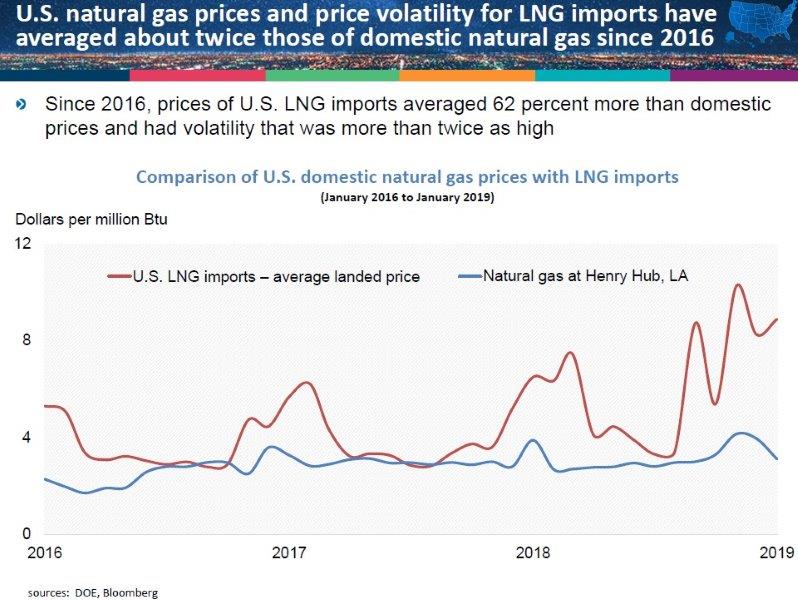The $670 Million Question for New York, New England Consumers
Mark Green
Posted April 4, 2019
A pair of graphics prepared by API Chief Economist Dean Foreman help underscore the impacts of bad, consumer-impacting policies blocking needed natural gas infrastructure in New York and New England.
First, because New York and New England don’t have enough natural gas pipeline capacity to meet the needs of consumers, especially during peak-demand months in the winter, the two have had to import liquefied natural gas (LNG) to help fill in the gaps.
As Dean’s graphic shows, 90 percent of the $1.2 billion in LNG the U.S. has imported since 2016 went to NY/NE. The bad news for consumers is that they paid about $670 million more for the imported LNG than they would have paid for domestic natural gas – that should have been available from the nearby Marcellus shale play with sufficient infrastructure to deliver it:

What we see in U.S. Energy Information Administration data is that consumers in New York and the New England states paid significantly more than the national average for natural gas in December:

Based on the U.S. Energy Information Administration data used to develop the first graphic above, consumers in Pennsylvania and Ohio paid less for natural gas than consumers in New England, where prices are relatively higher – presumably because of scarcity of supply with limited pipeline infrastructure.
Instead of leveraging natural gas from nearby states, New England has relied on imported LNG at prices that have been higher and more volatile. Dean’s second graphic compares price volatility of imported LNG (red line) and domestic natural gas (blue):

What you see above is that the average price for domestic natural gas (Henry Hub) has been relatively steady, while the average landed price of imported LNG has been much more volatile.
The point is that folks in NY/NE (policymakers and others) who may have reasoned that they could turn to imported LNG to help meet the region’s energy needs – we’ll just buy imported LNG when we need it – have done so at great impact to consumers. Basically, when NY/NE has needed imported natural gas, so has everyone else.
We’re moving from winter to spring, so this impact may recede from the public’s consciousness. But as we’ve noted in other posts (see here and here), the region’s consumers shouldn’t continue to be penalized by poor public policy that prevents needed natural gas infrastructure. It’s not just about fuel for home heating. In December, New York generated more than a third of its electricity using natural gas, so cost impacts have been felt there as well.
Instead of blocking natural gas infrastructure construction and/or expansion, policymakers at all levels in these states should consider the needs of consumers ahead of politics. Natural gas is reliable, affordable and available nearby – with climate benefits, too, as increased use of natural gas is the main reason U.S. energy-related carbon dioxide emissions have fallen to their lowest level in a generation.
This annual tale of woe is one New York and New England policymakers can call to a halt by dismantling the roadblocks to needed infrastructure.
About The Author
Mark Green joined API after a career in newspaper journalism, including 16 years as national editorial writer for The Oklahoman in the paper’s Washington bureau. Previously, Mark was a reporter, copy editor and sports editor at an assortment of newspapers. He earned his journalism degree from the University of Oklahoma and master’s in journalism and public affairs from American University. He and his wife Pamela have two grown children and six grandchildren.


